Last analysis allowed for more downwards movement.
Summary: The bigger picture reverts to seeing a pullback continue here to about 1,261. It may be as low as 1,170 – 1,158.
Look out for a short term bounce. It may find resistance about the upper edge of the pink channel on the first hourly chart. If that trend line is breached, then look for it to end about 1,330.
Watch On Balance Volume carefully for a signal. It will come after the next session.
Always trade with stops and invest only 1-5% of equity on any one trade.
New updates to this analysis are in bold.
Last monthly charts for the main wave count are here, another monthly alternate is here, and video is here.
Grand SuperCycle analysis is here.
The wave counts will be labelled first and second. Classic technical analysis will be used to determine which wave count looks to be more likely.
FIRST ELLIOTT WAVE COUNT
WEEKLY CHART
There are more than 23 possible corrective structures that B waves may take, and although cycle wave b still fits well at this stage as a triangle, it may still be another structure. This wave count looks at the possibility that it may be a double zigzag.
If cycle wave b is a double zigzag, then current upwards movement may be part of the second zigzag in the double, labelled primary wave Y.
The target remains the same.
Within intermediate wave (C), no second wave correction may move beyond the start of its first wave below 1,205.41. However, prior to invalidation, this wave count may be discarded if price breaks below the lower edge of the black Elliott channel. If this wave count is correct, then intermediate wave (C) should not break below the Elliott channel which contains the zigzag of primary wave Y upwards.
There are two problems with this wave count which reduce its probability in terms of Elliott wave:
1. Cycle wave b is a double zigzag, but primary wave X within the double is deep and time consuming. While this is possible, it is much more common for X waves within double zigzags to be brief and shallow.
2. Intermediate wave (B) within the zigzag of primary wave Y is a double flat correction. These are extremely rare, even rarer than running flats. The rarity of this structure must further reduce the probability of this wave count.
DAILY CHART
The analysis will focus on the structure of intermediate wave (C). To see details of all the bull movement for this year see daily charts here.
Intermediate wave (C) must be a five wave structure, either an impulse or an ending diagonal. It is unfolding as the more common impulse.
It is possible that minor wave 1 may have been over at the last high and the current pullback may be minor wave 2. Minor wave 2 may not move beyond the start of minor wave 1 below 1,205.41.
Minor wave 2 is not over and may continue lower to reach a more normal depth of about 0.618 the length of minor wave 1, about 1,261. This would also see minor wave 2 have a better proportion to minor wave 1 in terms of duration; minor wave 1 lasted 44 days and so far minor wave 2 has lasted only 13 days. If it continues now for another 8 days, it may total a Fibonacci 21.
HOURLY CHART
This wave count would expect minor wave 2 to now continue for another 8 days, if it exhibits a Fibonacci duration of a total 21 days.
When the first zigzag in a correction has not moved price deep enough, then a second zigzag should be considered. Here, the first zigzag of minute wave w is only a 0.45 length of minor wave 1. Second wave corrections are usually deeper than this.
X waves within double zigzags are commonly brief and shallow. Minute wave x fits this definition here.
If this correction for minor wave 2 is correctly identified as a double zigzag, then minute wave y must subdivide 5-3-5. Within the zigzag of minute wave y, minuette wave (b) may not move beyond the start of minuette wave (a) above 1,313.39. Minuette wave (b) should find very strong resistance about the upper edge of the best fit channel if it gets that high.
Along the way down, to the target at 1,261, there should be another bounce to last one to three days for minuette wave (b). Price is not expected to move in a straight line. It almost never does.
At this stage, minuette wave (a) may now be a complete impulse. Minuette wave (b) may now bounce higher up to the upper edge of the best fit channel.
If price breaks above that pink trend line, then minor wave 2 would be relabelled as a single zigzag in the same way as the second wave count labels this downwards movement.
Minuette wave (a) looks to be incomplete.
Note: The labelling on the alternate chart for this downwards movement works in the same way for this main wave count. Minor wave 2 may also be a single zigzag. The low of the 21st of September may be minute wave a. Minute wave b may be continuing sideways as an expanded flat. An explanation of how this works was given in the video published in last analysis. Members are encouraged to watch the video if they are having any confusion here about short term possibilities.
SECOND ELLIOTT WAVE COUNT
WEEKLY CHART
It is still possible that cycle wave b is unfolding as a regular contracting triangle.
Within a triangle, one sub-wave should be a more complicated multiple, which may be primary wave C. This is the most common sub-wave of the triangle to subdivide into a multiple.
Intermediate wave (Y) now looks like a complete zigzag at the weekly chart level.
Primary wave D of a contracting triangle may not move beyond the end of primary wave B below 1,123.08. Contracting triangles are the most common variety.
Primary wave D of a barrier triangle should end about the same level as primary wave B at 1,123.08, so that the B-D trend line remains essentially flat. This involves some subjectivity; price may move slightly below 1,123.08 and the triangle wave count may remain valid. This is the only Elliott wave rule which is not black and white.
Finally, primary wave E of a contracting or barrier triangle may not move beyond the end of primary wave C above 1,295.65. Primary wave E would most likely fall short of the A-C trend line. But if it does not end there, then it can slightly overshoot that trend line.
Primary wave A lasted 31 weeks, primary wave B lasted 23 weeks, and primary wave C lasted 38 weeks.
The A-C trend line now has too weak a slope. At this stage, this is now a problem for this wave count, the upper A-C trend line no longer has such a typical look.
DAILY CHART
This second wave count expects the new wave down may be deeper and longer lasting than the first wave count allows for.
The blue base channel on this second wave count is drawn in exactly the same way as the pink Elliott channel on the first daily chart. For this second wave count the middle of minor wave 3 should have the power to break below support at the lower edge of the base channel. If price does behave like this, it would offer support for this second wave count over the first wave count.
A common length for triangle sub-waves is from 0.8 to 0.85 the length of the prior wave. Primary wave D would reach this range from 1,170 to 1,158.
If primary wave C is correctly labelled as a double zigzag, then primary wave D must be a single zigzag.
HOURLY CHART
1-2-3 of an unfolding impulse subdivides 5-3-5, exactly the same as a zigzag. This second wave count sees an unfolding impulse at minor degree (the first wave count may see subdivisions in the same way for a zigzag downwards for minor wave 2).
Downwards movement to the last low so far has a slightly neater fit as a zigzag than it does as an impulse.
An expanded flat correction may be unfolding. These are very common structures. Here, minute wave b is within the most common range of up to 1.38 times the length of minute wave a.
The long lower candlestick wicks of the last few hours strongly suggest more upwards movement here. This wave count today has reasonable support from classic technical analysis.
At 1,321 minute wave c would reach 1.618 times the length of minute wave a. This is almost the same as the 0.618 Fibonacci ratio of minor wave 1 at 1,320. This area looks like a reasonable target for a bounce to end.
TECHNICAL ANALYSIS
WEEKLY CHART
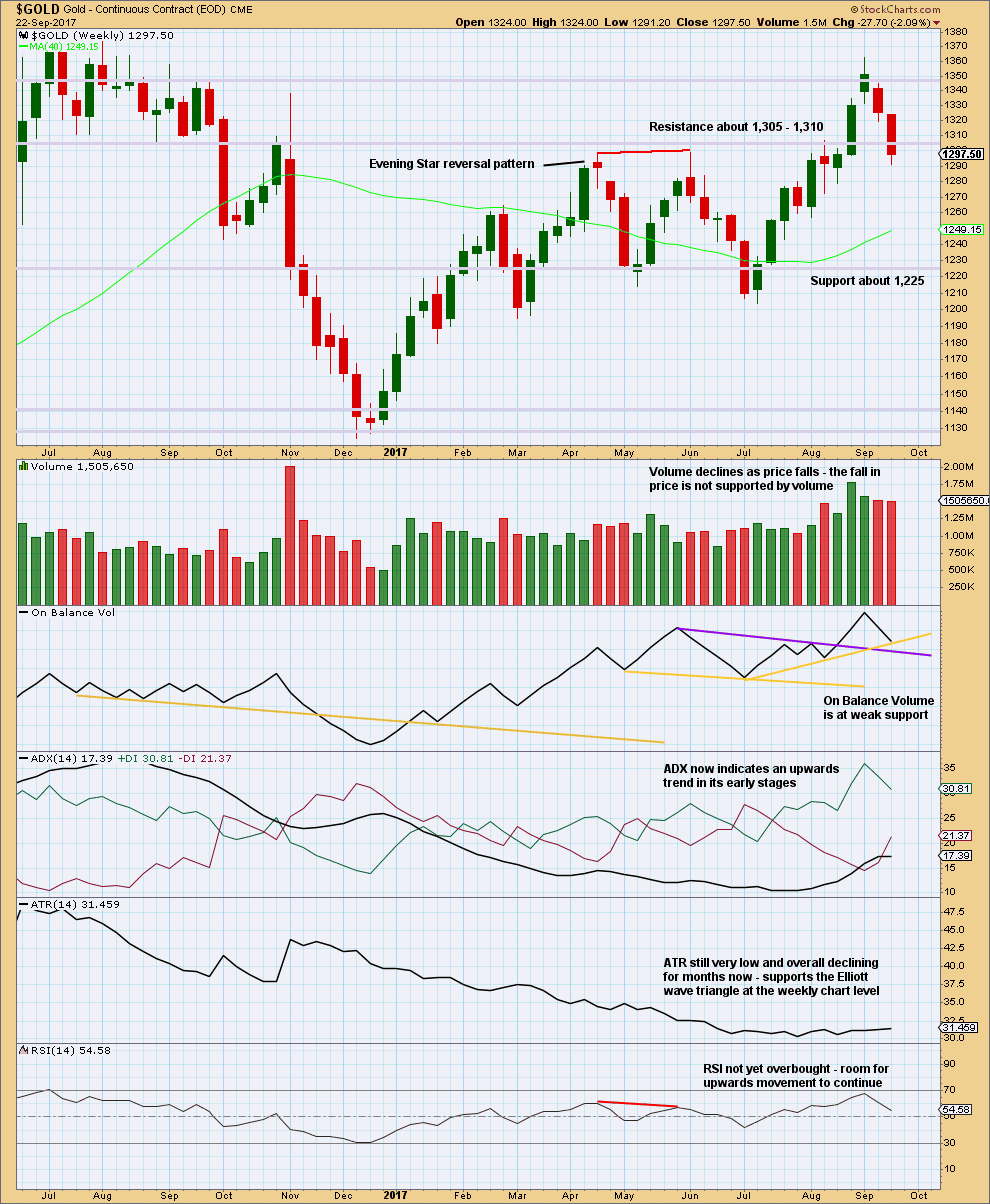
Click chart to enlarge. Chart courtesy of StockCharts.com.
Weak support here from On Balance Volume may halt the fall in price or initiate a small bounce. If On Balance Volume breaks below the support line thisweek, that would be a weak bullish signal.
Overall, this chart remains mostly bullish. At this stage, with downwards movement not being well supported by volume, it should be assumed to be a pullback within a larger trend until shown otherwise.
DAILY CHART
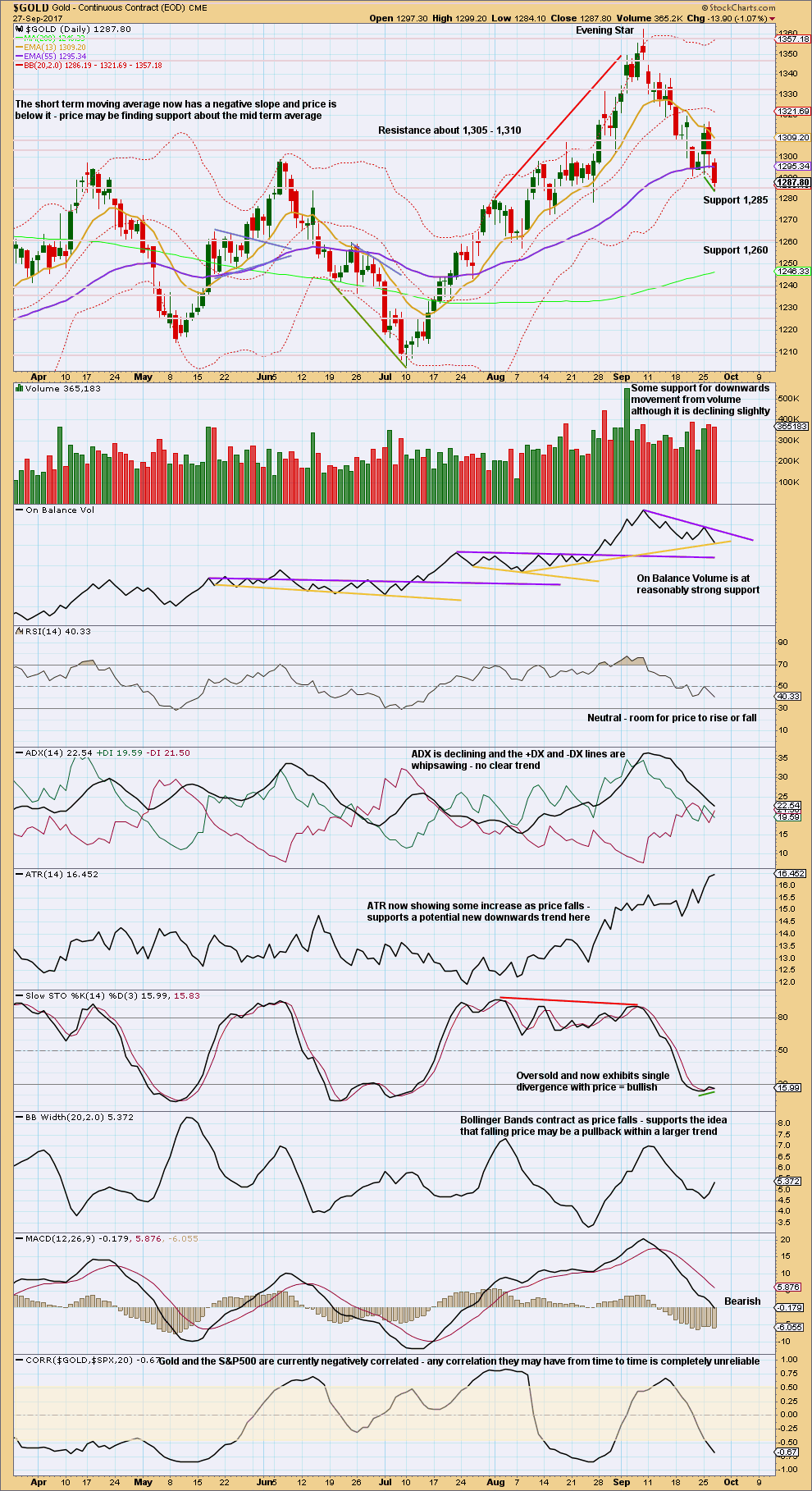
Click chart to enlarge. Chart courtesy of StockCharts.com.
The very short yellow support line is removed today from On Balance Volume because it is too weak for technical significance. On Balance Volume is right at support today. This line does have some reasonable technical significance. This may force a bounce up from here.
Volume data has again been changed retrospectively for Tuesday’s session from StockCharts. That session now shows some support for downwards movement.
Single divergence with price and Stochastics while Stochastics is oversold and support from On Balance Volume favours a bounce here.
GDX
DAILY CHART
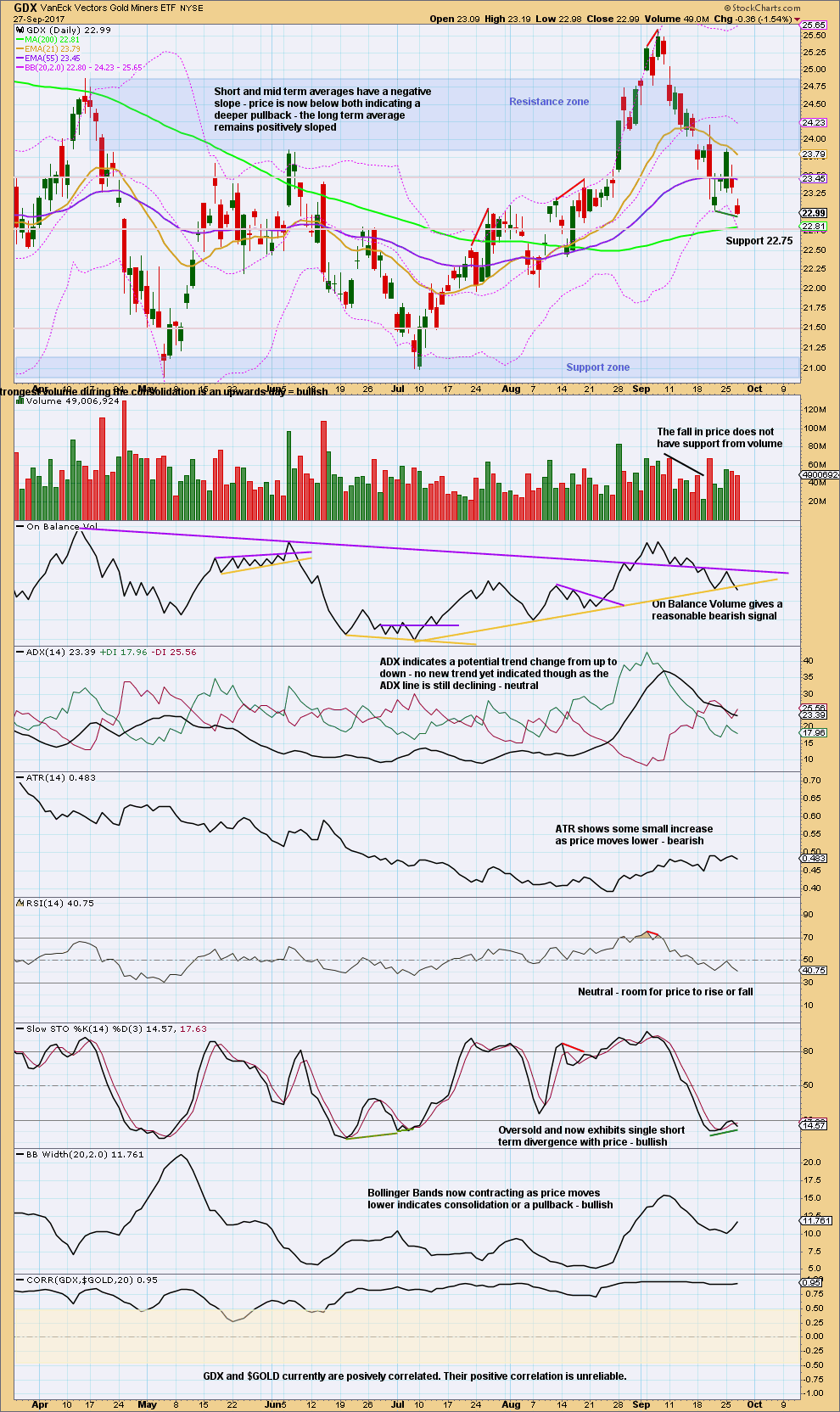
Click chart to enlarge. Chart courtesy of StockCharts.com.
Give weight to the bearish signal here from On Balance Volume. Look for any bounce to find resistance about 23.45.
Published @ 07:07 a.m. EST on 28th September, 2017.

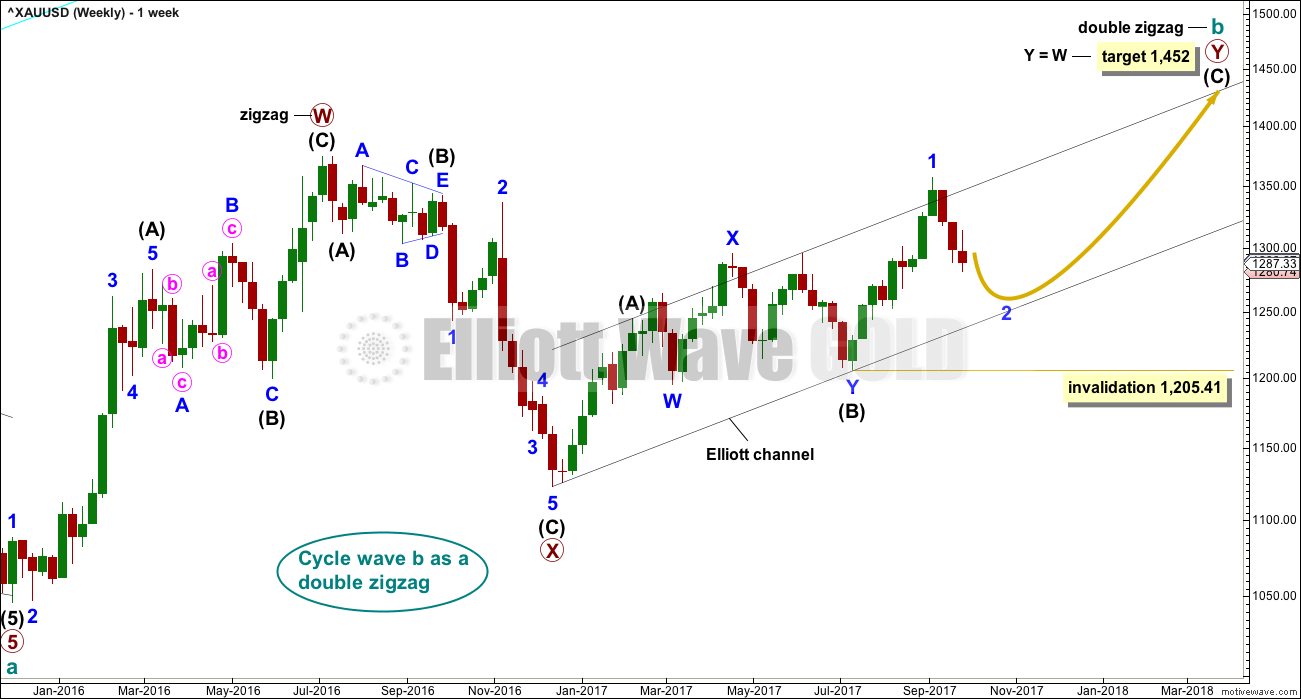
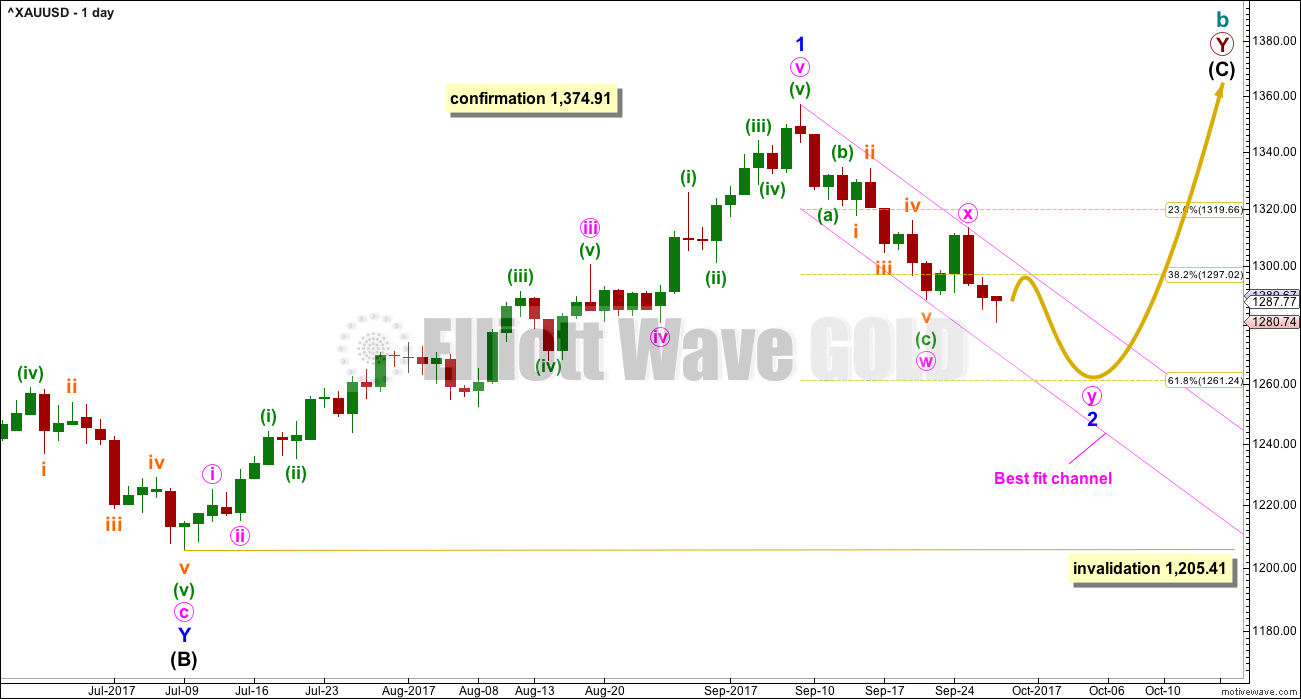
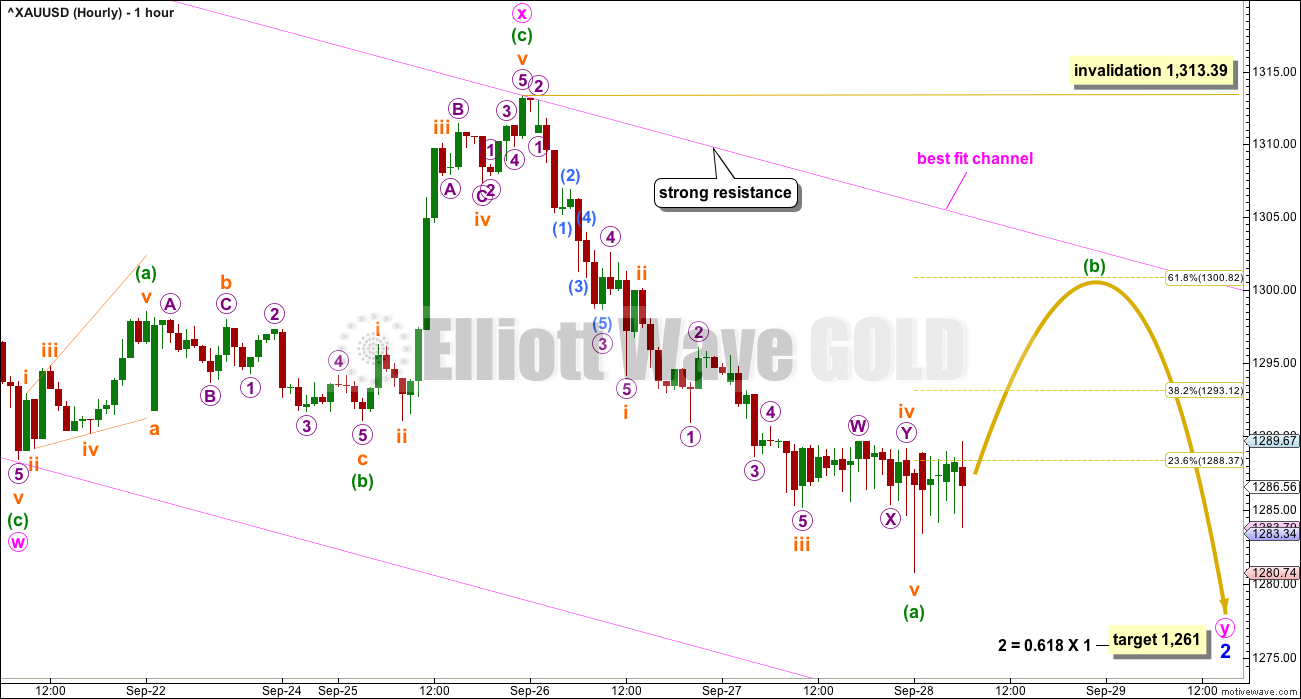
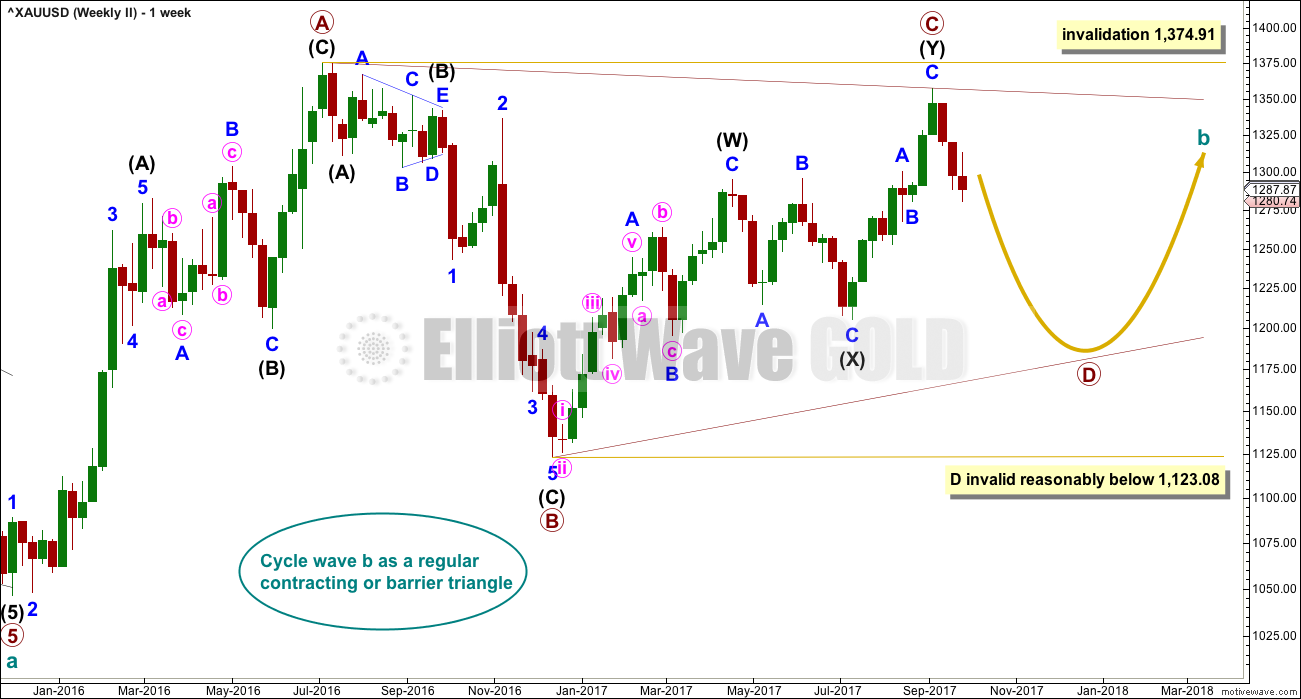
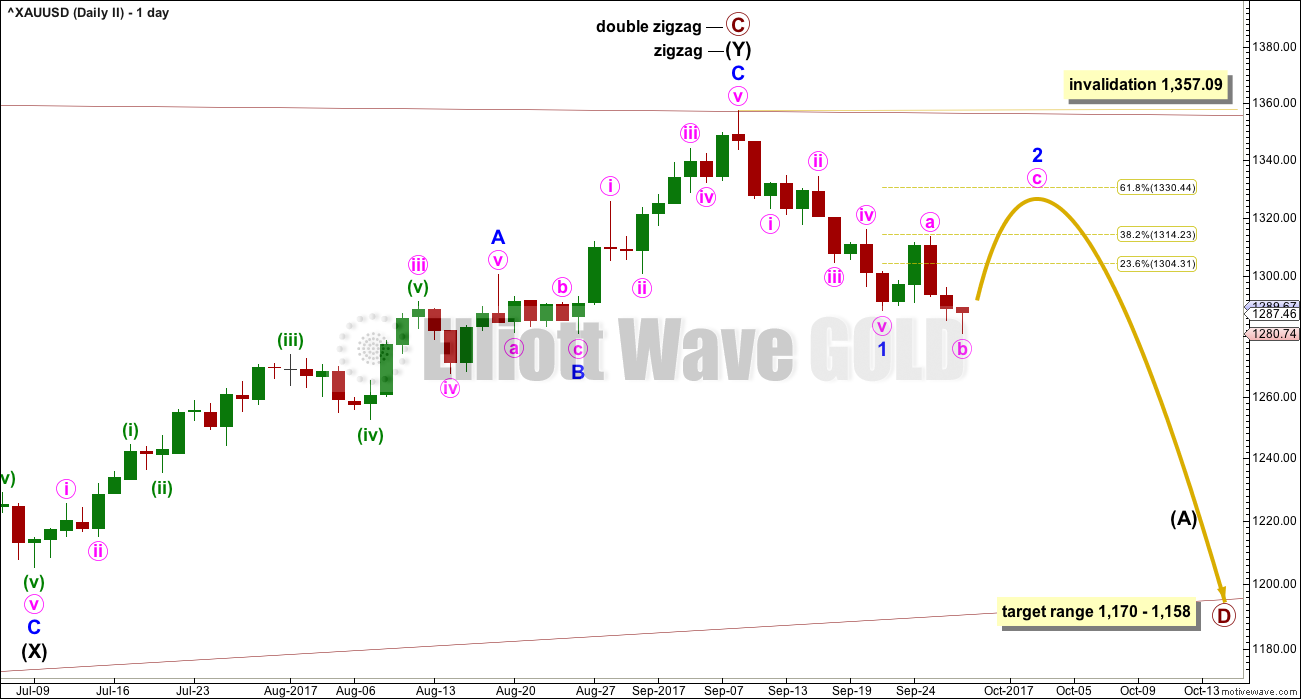
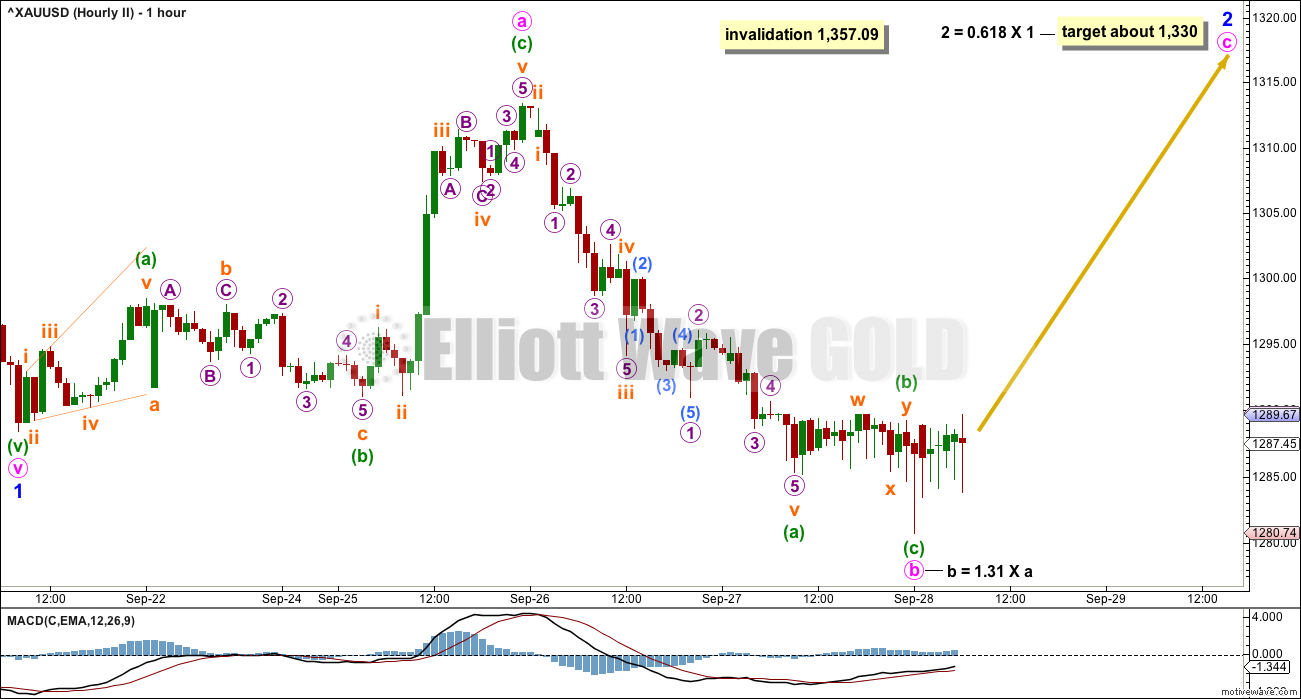
For the next 9 days while I’m in Hong Kong I will not be able to put a chart up here in comments just before the New York session closes.
Hong Kong is 12 hours ahead of New York. So I’ll be getting up at 6am to begin the daily analysis, which is when StockCharts will have data hopefully finalised. But I can’t be getting up at 3am to post a quick chart update, because I’m pretty sure nothing I would do at 3am would be any good 🙂
Find some good time for your self to enjoy and relax
And we all shall wait you 👍
Thank you Amjad 🙂
I’m still here, you’ll still have your daily analysis.